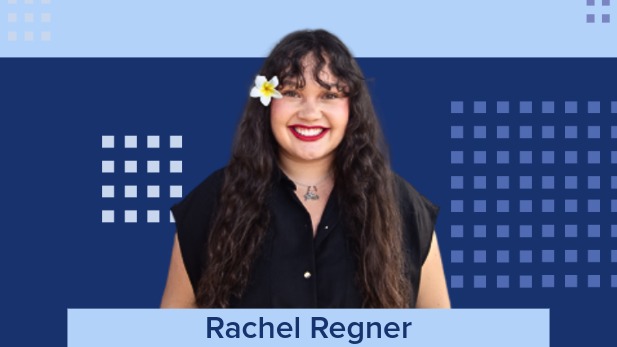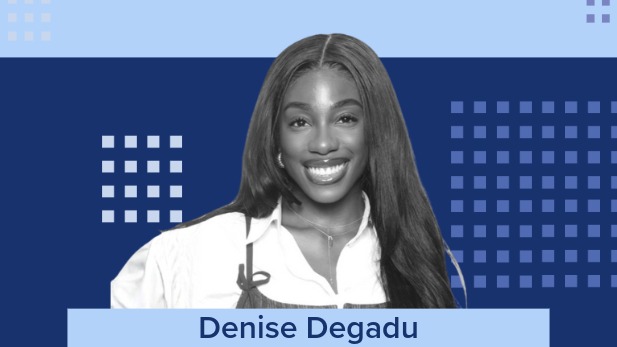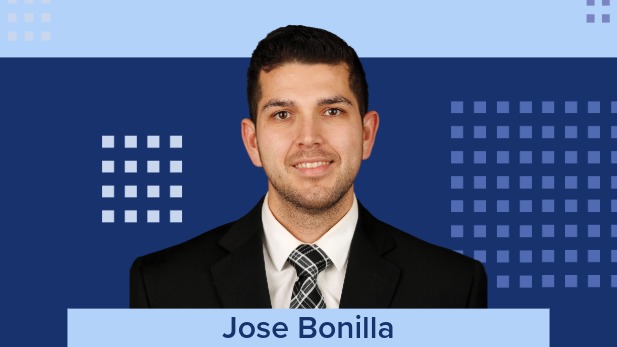An Interview with Human Sexuality Authors William Yarber and Barbara Sayad
Check out this Interview with Human Sexuality Authors William Yarber and Barbara Sayad
Published September 16, 2015
Human Sexuality: Diversity in Contemporary America takes a sex-positive approach, encouraging students to proactively seek a state of sexual well-being. Presented in an integrated, digital learning program, Yarber & Sayad’s contemporary research and exploration of cultural diversity provide a personalized learning experience for today’s students. The new edition integrates SmartBook®, a personalized learning program offering students the insight they need to study smarter and improve classroom results.
Q: What distinguishes the new 9th edition of Human Sexuality: Diversity in Contemporary America from other human sexuality titles?
Yarber: A strength of our text is that it has a balance of sexual science and affirmation of sexuality as a natural component of healthy living. Our text is guided by goals designed to aid students in becoming sexually healthy adults as expressed in the letter to students in the introduction:
“Many students find the study of human sexuality empowering; they develop the ability to make intelligent sexual choices based on reputable information and their own needs, desires, and values rather than on stereotypical, haphazard, unreliable, incomplete or unrealistic information, oppressive cultural dictums, or guilt, fear or conformity. They learn to differentiate between what they have been told about their sexuality and what they truly believe; that is, they begin to own their sexuality. Those studying this subject often report that they feel more appreciative and less apologetic, defensive, or shameful about their sexual feelings, attractions, and desires.”
Sayad: Since its inception, our book strives to be the most current, scientific, relevant and accessible text on the market. What makes this possible is a combination of factors including the wide range of diverse expression of sexuality, attention to and use of non-judgmental language, validated questionnaires that prompt students to examine themselves, coverage of media influences and a consistently sex-positive approach.
One of our distinguishing goals is presented as a letter to students in the introduction of our book. In the letter we ask that they consider the following:
“Particularly in a country as diverse as the United States, the study of human sexuality calls for us to be open-minded: to be receptive to new ideas and to various perspectives; to respect those with different experiences, values, orientations, ages, abilities, and ethnicities; to seek to understand what we have not understood before; to reexamine old assumptions, ideas, and beliefs; and to embrace and accept the humanness and uniqueness in each of us.”
Q: In what research areas are you currently involved?
Yarber: I am a member of The Kinsey Institute Condom Use Team (CURT), an international research team from the U.S., Canada, and United Kingdom that has focused on examining male condom use errors and problems among heterosexual and gay men and developing interventions designed to improve correct and consistent condom use. We have found, for example, that condom use errors and problems are common and are related to condom breakage and slippage which exposes partners to STIs and unintended pregnancy. Recently, CURT has studied condom use errors and problems among young African American heterosexual and gay men residing in the Deep South, a population disproportionately impacted by HIV. We developed the condom-use intervention, The Kinsey Institute Home Work Intervention Strategy (KIHIS), in which research indicated that KIHIS improved correct and consistent condom use among both heterosexual men and gay men. CURT recently developed a street-based condom-use intervention that was shown to have efficacy among tourism workers in a vacation destination with a very high STI rate. Besides continuing our work among African American heterosexual men and gay men in the Deep South, we are presently developing a condom-use intervention for women with male partners.
Sayad: While I am not a researcher, I am a sexuality educator who values teaching and learning. Some of my interests, writings, and presentations include the following which are integrated into parts of the new 9th edition of our text:
- virginity: its meanings and implications for young people
- body image and its impact on sexuality
- why comprehensive sexuality education? Measures and qualities of programs that have an impact
- media use and its impact on sexuality
- gender: new meanings, new terms, new research
- gay, lesbian, bisexual, transgender or other: why inclusiveness matters
These topics are not randomly selected. Rather, they come from students’ interests and concerns. When addressing any topic, the audience comes first. Variations of color, socio-economic status, formal educational, language, culture, and gender and orientation are just a few of the considerations that must be addressed when discussing any topic in human sexuality. The challenge remains for the instructor to be familiar, competent, comfortable, supportive, and accessible: no small order!
Q: How do you think the field of human sexuality and the teaching of it has evolved and is evolving?
Yarber: The number of sex researchers and academic centers devoted to studying sexuality at colleges and universities throughout the United States has increased greatly since the early work of Alfred Kinsey over 60 years ago. More faculty from varied academic disciplines are conducting scientific research on the full spectrum of sexual expression, thus expanding research beyond the historical focus on the prevention of behavioral risk and quantifying the prevalence of sexual behaviors. Greater emphasis is currently given to understanding the nature and impact of social, cultural, biological, relationship and individual factors upon sexual behavior among varied genders, racial/ethnic groups, ages, sexual orientations, and populations. This multi-disciplinary/multi-perspective scientific approach broadens our understanding of sexuality, providing relevant information relative to assisting persons in becoming sexually healthy adults.
Sayad: Probably most significant in the evolution of sexuality education is the range of exposure that individuals have had to sexuality. Growing up with the Internet has provided students with the opportunity to explore an endless assortment of topics, including articles, blogs, unfiltered content and photos, with little demarcation between entertainment and education (though I’m guessing far more is viewed to entertain). As a result, though students do feel more confident and knowledgeable when they enter a human sexuality class, many have not had the advantage of being in an environment that provides access to scientific literature on a wide range of topics, opportunities for critical thinking, and evaluation of attitudes and behaviors. Additionally, there has been for many, the absence of a safe environment where the power of a knowledgeable, caring, and committed instructor helps them to begin unpacking stereotypes, false assumptions, beliefs, and guilt.
Given the diversity of students in our classrooms, including those who are mentally and/or physically challenged, socio-economically disadvantaged, marginalized, and often silenced because of, for example, sexual abuse or having a gender variation, it is no longer sufficient or relevant to discuss sexuality without integrating these variations into readings, blogs, assignments, and class discussions. As such, this makes teaching and learning about sexuality far more relevant, significant, and challenging, especially around topics like ‘what is normal in human sexuality?’
Policy has also slowly been evolving to help support school comprehensive sexuality education, making the content more accessible to young people. There are also an increasing number of human sexuality classes available at universities along with excellent professional preparation programs for instructors.
What continues to be needed are a variety of empirically-based texts and resources that provide students with current, relevant, and scientifically accurate information about topics that are significant to them and to society. Further, the letter to students in the introduction of our book delineates the student reasons for taking a college human sexuality class that relevant texts and classes should address:
“Students begin studying sexuality for many reasons: to gain insights into their sexuality and relationships, to become more comfortable with their sexuality, to learn how to enhance sexual pleasure for themselves and their partners, to explore personal sexual issues, to dispel anxieties and doubts, to validate their sexual identity, to avoid and resolve traumatic sexual experiences, and to learn how to avoid STIs and unintended pregnancies.”
The challenge, however, remains the same: making these materials both accessible and affordable.
Q: What is the most interesting piece of research you have read lately?
Yarber: A study of kissing determined whether kissing occurs or does not occur in 168 cultures throughout the world. The study, “Is the romantic-sexual kiss a near human universal?” was published in the American Anthropologist. Less than one-half of the surveyed cultures engage in romantic/sexual kissing. Romantic kissing was most common in all 10 of the Middle East cultures studied, but only 55 percent of North American cultures engaged in romantic kissing, whereas 70 percent in Europe and 78 percent in Asia engaged in romantic kissing. There was no evidence of romantic kissing in Central America, Sub-Saharan Africa, New Guinean or Amazonian foragers or horticulturalists. The more socially complex cultures reported higher frequency of romantic kissing.
Sayad: This is a difficult question because over the past 18 months of updating our book, there have been literally hundreds of articles that have captured my attention! No doubt, topics like the role of media on sexuality, meanings of virginity, ‘hooking up,’ gender differences in sexual desire, pleasure and pleasuring, birth control updates, and personal questionnaires that prompt students to examine their attitudes and behaviors are significant topics of interest in college classrooms. Each of these topics along with current citations are included our book.
If presented well, updates in research help to clarify and demystify some of the stereotypes and preconceptions that students bring to the class. If contextualized, this data can be quite stimulating. Some of my favorite sites include The Youth Risk Behavior Survey, National Survey of Family Growth, American College Health Association, Guttmacher Institute, and Kaiser Family Foundation, Kinsey Institute to name a few.
Since the topic of ‘what is normal in human sexuality?’ is probably the most frequently-cited question in human sexuality classrooms, one article titled, “Normative sexuality development in adolescence: A decade in review, 2000-2009” is a good one to start a conversation.
A recent editorial by Leonore Tiefer, Ellen Laan & Rosemary Basson, “Missed opportunities in the patient-focused drug development public meeting and scientific workshop on female sexual dysfunction held at the FDA, October 2014,” published in the The Journal of Sex Research is not only relevant to the topic of female sexuality, but provides content for critical thinking and discussion around the role of research, biases, and policy, to name a few.
Additionally, a clip from John Oliver titled, “Why America is so bad at sex education” struck me as a great way to begin a provocative discussion about the current status of sexuality education in this country. Watch it and you’ll see why.
Q: How has your teaching background impacted your experience as human sexuality authors?
Yarber: My teaching keeps me relevant—that is, by interacting daily with college students I am continually reminded of their need and desire for the development of a healthy sexuality. The interaction points out to me what aspects of sexuality most need to be addressed in classroom information, discussion, and textbook coverage. Through the numerous years of teaching, I have learned which pedagogical methods are most suited for college-level students. These experiences and insights inform me of the most relevant content and instructional strategies for the program.
Sayad: It’s probably clear from my responses that the link between teaching and writing is direct and significant. As previously noted, many of the topics that are chosen for each edition of our textbook come directly from students’ stated questions and concerns. Additionally, my co-author and I search the scientific literature to find other areas of concern and special topics that we feel students need and desire to be sexually healthy individuals, partners, and members of society.
Q: What are your honest thoughts about educational technology? What do you find genuinely helpful in your classroom and what’s more of a “nice to have” but not a game-changer? Do you have advice for instructors looking to incorporate technology into their courses?
Yarber: Certainly college students have grown up with technology as a major part of their personal and educational experience. For many, technology enhances their learning. I feel that technology can enhance existing text material in providing another learning strategy but should be a supplemental learning tool not designed to replace a strong text.
Sayad: In my opinion, technology is an enhancement to and not the driving force of teaching and learning about any subject. While students are obviously connected to the media, the balance between the book and the tools that assist in learning is just that; a balance that we need to somehow achieve. Technology is essential and here to stay. To continue to advance, and regardless of the venue, instructors need ongoing training and technological support, materials need to be accurate and reflective of the text, and assessment needs to be built into the system and shared.
Additional Reading:
- Jankowiak, William R., Shelly L. Volsche and Justin R. Garcia. “Is the romantic-sexual kiss a near human universal?” American Anthropologist 117.3. (2015): 535–539. Web.
- Tolman, Deborah L., and Sara I. McClelland. “Normative sexuality development in adolescence: A decade in review, 2000-2009” Journal of Research on Adolescence 21.2 (2011): 242-255. Web.
- Leonore Tiefer, Ellen Laan and Rosemary Basson “ Missed opportunities in the patient-focused drug development public meeting and scientific workshop on female sexual dysfunction held at the FDA, October 2014,” The Journal of Sex Research 52.6 (2015): 601-603. Web.


